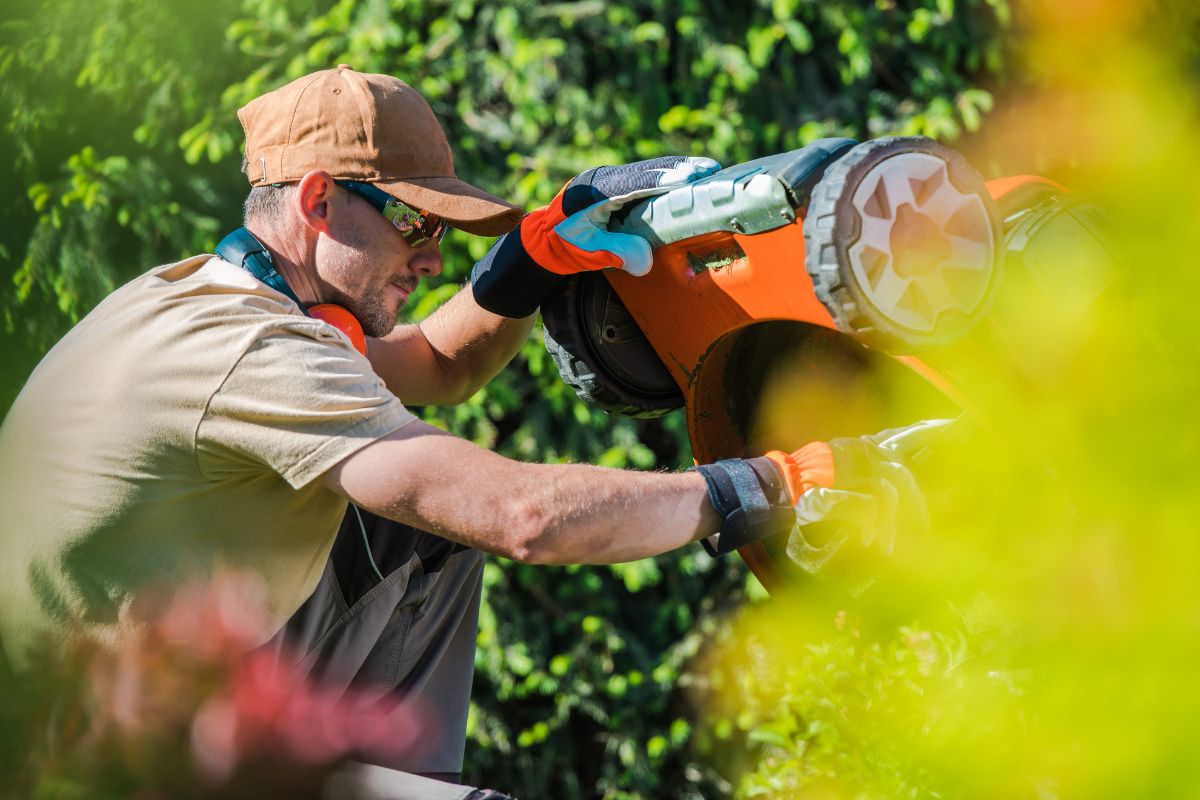When it comes to the modern lawn mower, there are many components that are vitally important to the overall functionality of the machinery – with one example being the solenoid, a piece of equipment widely used in mechanical manufacturing, and one that has numerous uses within countless fields.
But what exactly is a solenoid, and how can you test it on your lawn mower?
What Is A Solenoid?
In engineering terms, a solenoid is a type of electromagnet, which consists of a coiled wire with a length greater than the diameter.
This creates a magnetic field, which can then be used to transfer electrical energy into mechanical energy – an important process for mechanical objects to move when connected to electricity.
What Is A Solenoid Used For?
As mentioned above, a solenoid is used to convert electrical energy into mechanical energy, allowing the mower to operate, the blades to spin, and the lawn mower to serve its purpose.
Basically, the solenoid is what allows the engine of the lawn mower to start and tick over for use.
If the solenoid is not working properly, or if there is an electrical fault somewhere in the device, then the engine will not turn on, rendering the lawn mower useless.
The Importance Of Testing Your Solenoid
If you are all set to mow your lawn, and the mower refuses to start when you hit the ignition, then the solenoid might be the reason – and in many cases this is the first thing you should probably check when diagnosing the problem.
Before you check your solenoid though, you should also ascertain whether you have enough fuel in the tank, and whether the lawn mower has been properly maintained or not.
If those two things are indeed up to scratch, then the problem is more than likely electrical – meaning some further investigation is needed.
Learning to test the solenoid is one of the most useful tricks you can learn, and can help eliminate or isolate the problem when one arises.
Starter Solenoid
All lawn mowers have some kind of starter, and this is a low amperage relay that allows a high amperage current of electricity to pass from the battery to the starter solenoid.
The starter solenoid is composed of various nodes and terminals, which can both become worn down over time or lose continuity – and this stops the necessary current from passing to the starter from the battery, thus stopping it from switching on.
How To Test Your Solenoid
When it comes to testing the solenoid, the process is actually fairly simple, and can be achieved by following a few easy steps.
Step One
The first step requires you to test the battery voltage, and locate and remove the solenoid from the lawn mower.
Step Two
You then need to check the solenoid for clicking sounds. You can do this by connecting it to the 12 V DC power supply.
If there are indeed clicking sounds, then this indicates a fault in the terminals, and could indicate that they have worn out and aren’t working properly.
Step Three
Next you need to connect the battery to the solenoid, and begin testing the continuity using a multimeter. If there is no continuity, then the solenoid is indeed faulty, and will need changing.
Step Four
Another good way to test the solenoid is to jump the engine of the lawn mower while simultaneously turning the ignition key.
If the engine starts using this method, then you will know that the engine and the battery are working correctly, and that it is indeed the solenoid that is the faulty part.
Can The Solenoid Be Bypassed?

Bypassing the starter solenoid is actually pretty easy.
You can do this by using a screwdriver to touch the two posts on the solenoid. Be sure to use an insulated screwdriver – which most are – as this will earth you, and stop you from getting a nasty shock.
If the engine starts up immediately while the key is turned in the ignition, then you have your answer as to what is wrong with the mower.
Is Fitting A New Solenoid Difficult?
When fitting a new solenoid, the process can be daunting to some – especially if you have limited experience with electrics and wiring.
However, the process simply requires you to wire the terminals to their corresponding positions, and this should allow the lawn mower to tick over nicely.
Are Solenoids Expensive?
Unfortunately, lawn mower solenoids can indeed be expensive, mainly due to the fact that they are sensitive and fairly sophisticated pieces of technology.
As such, you need to weigh up whether the lawn mower you currently have is worth repairing, or whether it would actually work out cheaper to buy a new one in the long run.
Are Solenoids Easy To Find?
Of course, one of the best places to purchase a new solenoid is online, and there are numerous great and cheap offers on places like
However, to see one in person before you buy, and to discuss your options with a human being, there aren’t much better options than your local hardware store.
Is It Worth It?
If the lawn mower you own is a cheaper model, then you might be better off buying a new one and saving time, money, and effort that repairs require.
Final Thoughts
And there we have it, everything you need to know about lawn mower solenoids, and how you can test them.
It’s true that solenoids play an important role in the overall functionality of modern lawn mowers, allowing the mower to move mechanically – a function that revolutionized the whole process, and made manual push mowers a thing of the past.
So if you want to test your solenoid, then why not give this method a try? Something tells me you won’t be disappointed!


